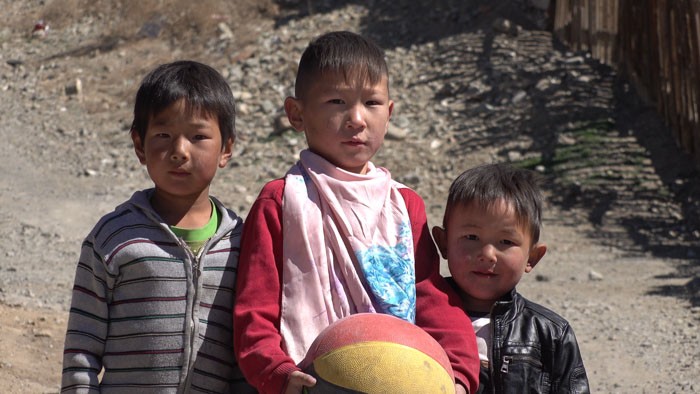Where our education leaves us flat, this inspired documentary film, Echoes of the Empire: Beyond Genghis Khan, brings the past and present of the Mongolian people to life. Written by award-winning novelist and filmmaker Robert Lieberman and produced by Deborah C. Hoard of Photosynthesis Productions, with its focus on social justice issues, we see the struggles of the modern post-Communist Mongolian people as they formed their own independent Democratic nation in 1989-1990.
Through the expansive cinematography and personal stories of the people, we learn about the nomadic lifestyle on the steppe and what life is like in a ger (an abode made to be taken apart and moved periodically, covered in animal wool). We are told, “There is always the wind. The people and the air move constantly.” They are truly at one with their environment, the land, and the animals. Even their deep-throated singing embodies its surroundings, whether it’s the water or a cave or the wind.
Mongolia is sandwiched between Russia and China and has been a part of both countries in the past. The country encompasses the southern part of Siberia to the north and the Gobi desert takes up about a third of the country to the South. But, to the east is one of the most pristine steppe eco-systems of the world, and is the center of the Mongolian people’s identity and rich history and culture, reaching back to antiquity.
To the Mongolian people, Genghis Khan is much more than a great conqueror, but a hero and source of inspiration. He led an extraordinary life, unifying an expansive commerce-based empire. He was a visionary who also created international laws protecting women and religious freedoms.
In the modern-day, it is refreshing to see the Mongolian people identify grave social issues, like coal pollution, and actually solve it by educating the people and presenting alternatives. They are currently plagued by educational inequities and the problems that ensue when nomadic people lose their livelihood and move to the outskirts of Ulaan Baatar, Mongolia’s largest city. There are clashes in social etiquette, and punctuality (or lack thereof) among other things. What city jobs are suitable for former herders from the steppe? Only time will tell as the Mongolian people face these issues head-on, bridging the present with its proud and rich past.
